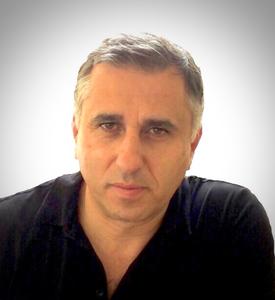CIO50 2022 #13 Richard Exton, Aware Super

Chief technology officer of Aware Super, Richard Exton lead a multi-year digital transformation program that has dramatically simplified operations and already helped the organisation save almost $2 million on IT spend, projected to reach $6 million upon completion in 2023.
Called ‘Catalyst’, the project has seen Exton and his team introduce 19 new systems, “uplifting” a further 21, with much of the heavy lifting being done in house.
“The objective is to transform our entire business, leveraging modern technologies to enable a profoundly simple member experience with industry leading digital capability, while reducing cost and removing technology debt,” Exton tells CIO Australia.
Already 160 legacy systems have been decommissioned, with a further 254 systems for the chop in the next 12 months.
Key to this was standing up the company’s core systems as a SaaS solution in the cloud, which Exton says has provided the flexibility and scalability needed to “deliver an outstanding customer experience” to such a large number of members.
It’s also meant Aware Super is better able to roll out new and emerging technology to continuously enhance capability and to maintain appropriate scale moving forward, setting the company apart from other super funds yet to undertake a cloud migration of this magnitude.
Australia’s third largest superannuation fund, Aware Super, has some $150 billion under management and more than one million members, which have been the main driver.
Catalyst has so far been rolled out to Aware’s 250,000 VicSuper members, with the remaining 750,000 members coming on stream in 2023.
The results so far are very encouraging, with VicSuper members benefitting from increased self-service capabilities and greater visibility, including of the progress of transactions via an enhanced Member Portal.
Other features include user-friendly language, an uplift in capabilities for tax deductions, bank account maintenance, and quicker processing time for “moments that matter” with claims for financial hardship now resolved in 2-3 days instead of weeks.
Exton says that members are also benefitting from a new “multi-award-winning” Aware mobile app.
“Our app and portal have enhanced login and join experiences, allowing them to create a username, easily find their member number, or reset a password which previously required a phone call to Aware’s service centre and multiple manual steps.”
Faster communications are also possible after Aware moved to a SaaS model, which has created “native digital” and “automated correspondence” experiences.
This members can view correspondence and statements online within minutes of their interactions with Aware’s customer staff, instead of waiting until the next business day, which was typical with the old legacy system. And security has been improved with the introduction of a one-time pin and digital verification, replacing manual processes requiring postage of certified copies, while manual password resets have reduced by 79%.
Exton says the Catalyst program has significantly transformed how Aware Super has operated over the past two years, noting that this has largely come down to having become the first superannuation fund in Australia to leverage the public cloud for its core registry system.
No need for authority
Exton emphasises the importance of building trust and goodwill if CIOs want to have genuine influence across the organisation, but especially at the executive and board level.
In his capacity as CTO, he employs techniques that aim to consistently demonstrate how the organisation’s technology function and its capabilities align closely to enabling business strategies. At the same time, he seeks to develop strong stakeholder relationships with the board, executive, internal and external partners, "built on the foundation of trust and goodwill."
“I have been fortunate to work with a diverse range of stakeholders, in different companies and across global jurisdictions, that has taught me how to remain respectfully aligned to varied corporate cultures and their values,” he says.
“My leadership style is based on building authentic emotional connections with my stakeholders for deeper personal bonds to enable influence effectiveness. To build this rapport, at an individual level I seek to understand my stakeholders’ evolving interests, business needs and pain-points. This approach has developed a collaborative working manner that has resulted in long lasting, trusted relationships.”
Exton feels that this approach has meant he’s had no need for “authority” as such.
“I ensure stakeholder’s feel they are being heard, encouraged, and that their opinions are valued to ultimately deliver technology related benefits to their respective areas”.
David Binning